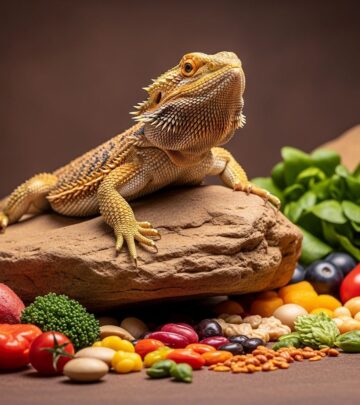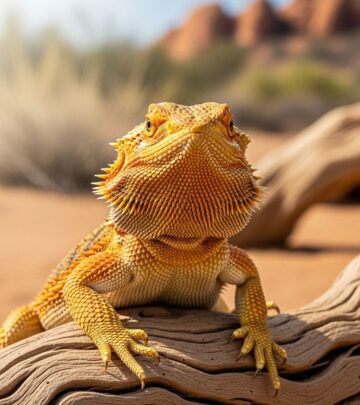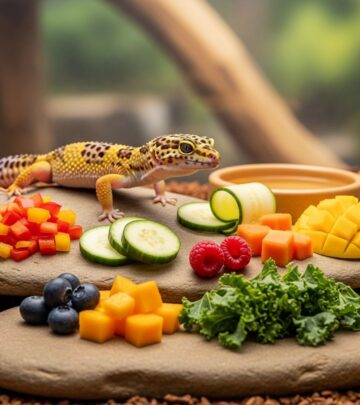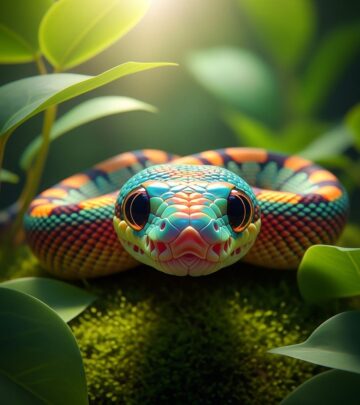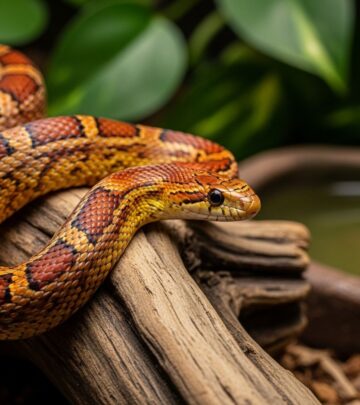What Do Turtles Eat? Comprehensive Turtle Nutrition Guide
Discover the ideal diet for your shelled companion's optimal health and longevity
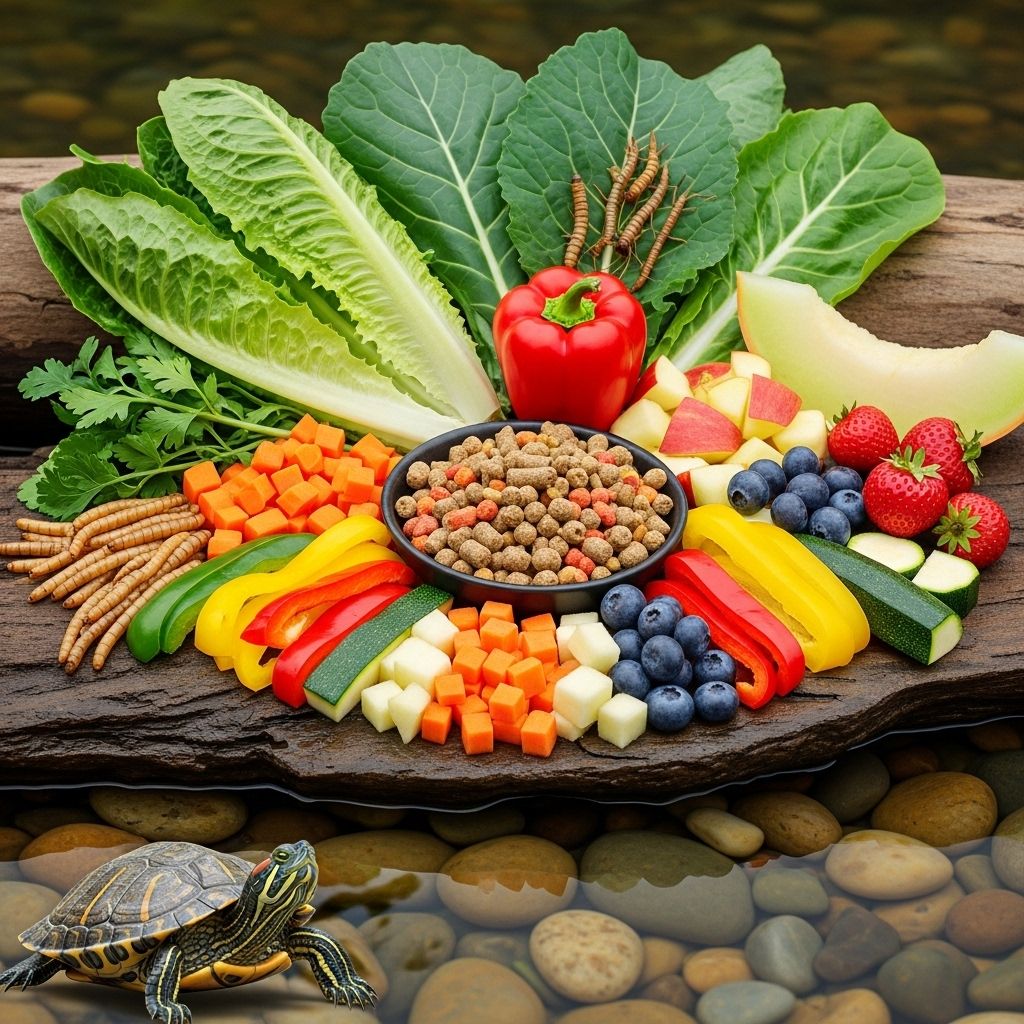
Image: HearthJunction Design Team
A Complete Guide to Turtle Nutrition: What Do Turtles Eat?
Proper nutrition is one of the most critical aspects of turtle care, directly impacting their health, shell development, and longevity. Whether you’re a new turtle owner or have been caring for these fascinating reptiles for years, understanding what turtles eat—and how their nutritional needs vary by species, age, and habitat—is essential knowledge for responsible pet ownership. This comprehensive guide explores everything you need to know about turtle nutrition, from natural diets to commercial foods and feeding schedules.
Understanding Turtle Dietary Classifications
Turtles have diverse dietary needs that vary significantly across species. Before determining what to feed your turtle, it’s important to understand which nutritional category they fall into:
- Carnivorous turtles: These species primarily consume animal-based proteins, including insects, fish, and small invertebrates. Examples include snapping turtles and softshell turtles.
- Herbivorous turtles: These turtles mainly eat plant matter such as leafy greens, vegetables, and some fruits. Adult tortoises often fall into this category.
- Omnivorous turtles: Most common pet turtles, including red-eared sliders, painted turtles, and box turtles, are omnivores that require a balanced diet of both animal and plant materials.
Many turtle species undergo dietary shifts as they mature. Hatchlings and juveniles typically need more protein for growth, while adults may transition toward more plant-based nutrition. Understanding these natural patterns helps provide age-appropriate nutrition throughout your turtle’s life.
Species-Specific Nutritional Needs
Aquatic Turtles
Popular pet species like red-eared sliders, painted turtles, and map turtles have specific dietary requirements:
- Juvenile aquatic turtles: Require approximately 50-70% animal protein and 30-50% plant matter. Their higher protein needs support rapid growth and development.
- Adult aquatic turtles: Should transition to approximately 25-50% animal protein and 50-75% plant matter as they mature. This reduction in protein helps prevent obesity and kidney problems in older turtles.
Suitable animal proteins for aquatic turtles include commercial turtle pellets, feeder fish (like minnows or guppies), insects (crickets, mealworms), and aquatic invertebrates (shrimp, krill). Plant options include dark leafy greens (kale, collard greens), aquatic plants (water lettuce, duckweed), and occasional fruits.
Box Turtles
These semi-terrestrial omnivores require a varied diet reflecting their natural foraging habits:
- Eastern and Three-toed Box Turtles: Thrive on a diet of approximately 60% plant matter and 40% animal protein.
- Ornate Box Turtles: Tend to be more carnivorous, requiring about 60% animal protein and 40% plant matter.
Box turtles particularly enjoy earthworms, slugs, snails, crickets, berries, mushrooms, melons, and leafy greens. Their diet should change seasonally to mimic their natural feeding patterns, with more fruits during summer months.
Tortoises
Most pet tortoises are primarily herbivorous, especially as adults:
- Mediterranean species (Greek, Russian): Require high-fiber, low-protein diets consisting mainly of grasses, hay, and leafy greens with minimal fruit.
- Tropical species (Red-footed, Yellow-footed): Need more varied diets that include vegetables, greens, and occasional fruits or protein.
Tortoises benefit from grazing on grasses and weeds, supplemented with dark leafy greens, vegetables like squash and carrots, and appropriate commercial tortoise foods.
Commercial Turtle Foods
Quality commercial foods form an important part of a captive turtle’s diet. These products are formulated to provide essential nutrients and can serve as a convenient foundation for your turtle’s nutrition.
Types of Commercial Foods
- Pellets and sticks: These floating foods are designed specifically for aquatic turtles, containing balanced nutrients including protein, vitamins, and minerals. Look for products with 30-40% protein for adult turtles.
- Freeze-dried foods: Options like krill, shrimp, and insects provide concentrated protein sources without the risk of parasites.
- Tortoise diets: Specially formulated commercial foods for tortoises typically contain appropriate calcium-to-phosphorus ratios and fiber content to support shell health.
When selecting commercial foods, examine the ingredient list carefully. Quality products list whole proteins (not by-products) first and contain appropriate vitamin and mineral supplements, particularly calcium. Avoid foods with excessive fillers, artificial colors, or preservatives.
Fresh Foods for Turtles
While commercial foods provide convenience and nutritional balance, fresh foods are essential for variety and enrichment. Here’s what to consider when offering fresh foods to different turtle types:
Animal Protein Sources
For omnivorous and carnivorous turtles, appropriate protein sources include:
- Live or frozen-thawed feeder fish: Offer minnows, guppies, or small goldfish occasionally (not as a staple due to thiaminase content)
- Insects: Crickets, mealworms, waxworms, and dubia roaches provide excellent nutrition
- Other protein sources: Earthworms, small pieces of cooked chicken or turkey, and freshwater shrimp
Always source feeder insects and fish from reputable suppliers to minimize parasite risks. For aquatic turtles, feeding protein sources in a separate container helps keep their main habitat cleaner.
Plant Matter for Turtles
Vegetables and greens form a critical component of most turtle diets:
- Dark, leafy greens: Collard greens, mustard greens, dandelion greens, and kale (in moderation) provide calcium and other nutrients
- Vegetables: Bell peppers, squash, carrots, and sweet potatoes offer vitamins and variety
- Aquatic plants: Water lettuce, duckweed, and water hyacinth for aquatic species
- Fruits (in moderation): Berries, melons, apple slices (seeds removed), and papaya as occasional treats
Always thoroughly wash fresh produce to remove pesticides and herbicides. Chop items into appropriate sizes based on your turtle’s size to prevent choking hazards.
Foods to Avoid
Some foods can be harmful to turtles and should be avoided entirely:
- Dairy products: Turtles cannot digest lactose
- High-oxalate greens: Spinach, beet greens, and Swiss chard can bind calcium and should be limited
- Processed human foods: Avoid bread, pasta, and foods with salt, sugar, or preservatives
- Toxic plants: Avocado, rhubarb, potato leaves, and tobacco plants contain compounds toxic to reptiles
- Raw meat: Can harbor parasites and bacteria
- Citrus fruits: Too acidic for most turtles’ digestive systems
When in doubt about a particular food item, research its safety or consult with a reptile veterinarian before offering it to your turtle.
Feeding Schedules and Quantities
Establishing appropriate feeding routines helps maintain optimal health and prevents obesity, a common problem in captive turtles. Feeding frequency varies by age:
- Hatchlings and juveniles: Feed daily or even twice daily in small amounts
- Young adults (1-3 years): Feed every other day
- Mature adults: Feed 3-4 times weekly
For portion size, a good rule of thumb is to offer an amount of food that would fit in your turtle’s head if it were hollow. Aquatic turtles should be allowed to feed for 15-20 minutes before removing uneaten food. Terrestrial species can have food available for slightly longer periods.
Morning feeding is ideal for most turtles, as it allows them time to digest and bask properly throughout the day. For aquatic turtles, ensure water temperature is appropriate (75-85°F for most species) before feeding, as cold water impairs digestion.
Supplements and Special Nutritional Considerations
Even with a varied diet, captive turtles often benefit from targeted supplementation:
Calcium Supplementation
Calcium is critical for shell development and overall health. Provide calcium by:
- Dusting food with a reptile calcium supplement 2-3 times weekly (more for growing juveniles)
- Offering cuttlebone or calcium blocks that turtles can nibble as needed
- Ensuring proper UVB lighting for vitamin D3 synthesis, which is necessary for calcium absorption
Vitamin Supplements
A high-quality reptile multivitamin used once weekly helps prevent deficiencies. Look for products containing vitamin A, which is especially important for proper eye and respiratory health in turtles.
Special Considerations
- Hibernating species: Require dietary adjustments before and after brumation periods
- Breeding females: Need additional calcium and protein during egg development
- Rehabilitating turtles: May require specialized nutrition to address specific health issues
Always introduce supplements gradually and follow product directions carefully, as over-supplementation can be as harmful as deficiencies.
Signs of Nutritional Problems
Monitor your turtle for these indicators of dietary issues:
- Shell problems: Pyramiding, soft shell, or shell rot can indicate nutritional deficiencies
- Eye issues: Swollen or puffy eyes may signal vitamin A deficiency
- Abnormal growth: Too rapid growth or stunted development
- Lethargy: Unusual inactivity or weakness
- Appetite changes: Sudden disinterest in food or excessive hunger
If you notice any of these signs, consult with a reptile veterinarian promptly. Many nutritional problems can be corrected if addressed early.
Frequently Asked Questions
Q: How often should I feed my adult aquatic turtle?
A: Most adult aquatic turtles should be fed 3-4 times per week. Overfeeding is a common problem that can lead to obesity and water quality issues.
Q: Can my turtle eat lettuce?
A: Iceberg lettuce should be avoided as it has almost no nutritional value. However, romaine lettuce and red leaf lettuce can be offered occasionally, though they should not replace more nutritious dark, leafy greens.
Q: Is it safe to feed my turtle fish from the pet store?
A: Feeder fish from pet stores can carry parasites and diseases. If offering fish, source them from reputable suppliers or consider frozen-thawed options that have been properly processed to eliminate pathogens.
Q: My turtle won’t eat vegetables. What should I do?
A: Many turtles, especially juveniles, prefer animal protein. Try mixing finely chopped vegetables with their favorite protein sources, gradually increasing the vegetable ratio. Also experiment with different textures and colors of vegetables to find preferences.
Q: Do turtles need water to swallow their food?
A: Many aquatic turtles do need water to swallow properly. They lack saliva and use water to help move food down their throats. This is why aquatic species typically take food items into the water to eat.
Q: How can I tell if my turtle is overweight?
A: Signs of obesity in turtles include fat bulging from around the legs, neck, or tail pockets, difficulty retracting into the shell completely, and a general rounded appearance beyond their natural body shape.
Understanding and implementing proper nutrition is one of the most important aspects of turtle care. By tailoring your turtle’s diet to their species, age, and individual needs, you can help ensure they live a long, healthy life as your shelled companion.
References
- https://www.petmd.com/reptile/nutrition/what-do-turtles-eat
- https://www.webmd.com/pets/what-do-pet-turtles-eat
- https://www.deltonavet.com/exotic-animal-hospital/what-do-turtles-eat-a-complete-guide-to-turtle-nutrition/
- https://www.merckvetmanual.com/management-and-nutrition/nutrition-exotic-and-zoo-animals/nutrition-in-turtles
- https://www.petco.com/content/content-hub/home/questions/02/4/752396.html
Read full bio of Shinta







